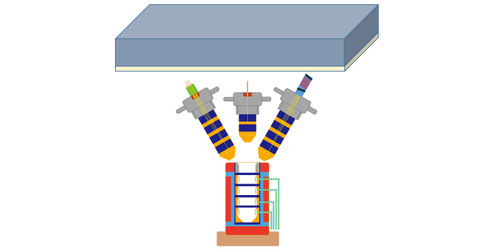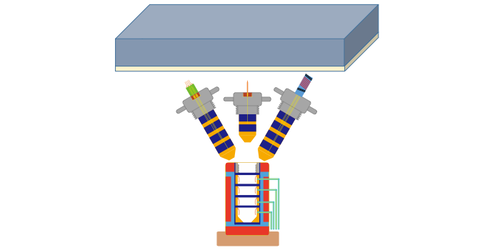An Airless Test for 2D Superconductors
Experiments indicate that 2D superconductors robustly allow electric current to flow without resistance. However, researchers have yet to show that many of these atomically thin films possess all of the properties required of a superconductor. Now Canhua Liu at Shanghai Jiao Tong University in China and colleagues have developed a technique for measuring the superconducting behavior of 2D materials under vacuum conditions. The team tested their technique on indium grown atop a silicon crystal, confirming that the material behaves as a conventional superconductor.
A potential superconductor must pass two tests. First, it must conduct with zero resistance. Second, it should expel a magnetic field, a behavior known as the Meissner effect. But confirming the Meissner effect is tricky and—for 2D materials—previously possible only in air. The chemical structure and material properties of a one- or two-atom-thick layer can change on exposure to air, making a vacuum-based technique a valuable addition for probing such systems.
To make their airless measurements, the team repurposed a scanning tunneling microscope. The probe on the microscope can be switched out under vacuum conditions, allowing the team to easily measure multiple properties of the material. The probes include a so-called four-point probe for monitoring electrical transport and a “two-coil” probe that can track whether a material expels magnetic flux. The team tested the setup on the silicon-supported 2D indium films, verifying both the technique and the material’s superconducting properties. The team says that researchers had thought the signals from these materials might be too weak to be detected, but their demonstration shows that isn’t the case.
This research is published in Physical Review B.
–Katherine Wright
Katherine Wright is a Senior Editor of Physics.





